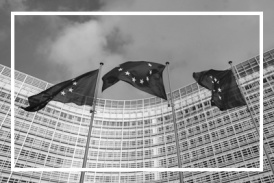Clean Fuel Shift Powers LNG Engine Market to $10.7 Billion by 2033
LNG engine market grows with stricter emissions rules, cost benefits, and rising marine and transport use, despite high costs and limited refueling sites.
An LNG engine is a type of internal combustion engine that operates using liquefied natural gas (LNG) rather than traditional fuels such as diesel or gasoline. These engines are increasingly utilized in sectors like marine transport, power generation, and heavy-duty vehicles due to their ability to significantly reduce emissions and improve fuel efficiency. LNG engines can be spark-ignited or dual-fuel, offering operational flexibility depending on the application. Their use aligns with global efforts to reduce carbon footprints and transition to more sustainable fuel sources.
The manufacturing of LNG engines requires precision engineering and integration of advanced systems, including cryogenic fuel storage, high-pressure fuel injection, and emission control technologies. These engines are designed to meet stringent environmental regulations while maintaining optimal performance. As global demand for cleaner energy grows, the LNG engine market is witnessing steady expansion, fueled by innovations in combustion and storage technology and strong regulatory backing for low-emission alternatives.
Download PDF Brochure: https://www.alliedmarketresearch.com/request-sample/A325619
Market Dynamics
The rising global emphasis on reducing carbon emissions is a major factor fueling the growth of the LNG engine market. As the world moves toward more sustainable energy solutions, LNG engines are emerging as a viable and cleaner alternative to diesel engines. These engines significantly reduce the emission of harmful pollutants such as carbon dioxide (CO₂), nitrogen oxides (NOₓ), sulfur oxides (SOₓ), and particulate matter, making them suitable for industries like marine transport, heavy-duty vehicles, and power generation. Their ability to comply with increasingly strict environmental regulations is positioning LNG engines as a critical tool for decarbonization.
A key advantage of LNG combustion is its low sulfur content, which minimizes the environmental impact of air pollution and acid rain. This benefit has prompted regulatory bodies such as the International Maritime Organization (IMO) to introduce mandates like the IMO 2020 regulation, which limits sulfur emissions in marine fuels. In response, many shipping companies are transitioning to LNG-powered vessels. Similarly, in road transport, LNG-fueled trucks and buses are gaining popularity due to their cost-efficiency and reduced emissions, making them an appealing alternative to conventional diesel-powered vehicles.
As governments around the world strive to meet net-zero carbon emission targets, investments in LNG infrastructure are accelerating. This includes the development of fueling stations, bunkering facilities, and storage terminals designed to support the growing fleet of LNG-powered engines. These infrastructure developments are crucial for enabling widespread adoption and ensuring the long-term viability of LNG as a transportation and energy fuel. Furthermore, public and private sector initiatives are increasingly focused on integrating LNG technology into national clean energy strategies.
Despite these favorable market trends, the high initial cost of LNG engine adoption presents a major hurdle. Compared to traditional engines, LNG engines require complex technology and specialized components such as cryogenic fuel tanks and advanced combustion systems. Retrofitting existing fleets or investing in new LNG-powered equipment can significantly increase capital expenditures for businesses, particularly for small and medium-sized enterprises that may lack the financial resources for such transitions.
Additionally, the need for supporting infrastructure further raises the economic barrier. Developing LNG refueling stations, bunkering terminals, and maintenance facilities involves considerable investment, and in regions with limited existing infrastructure, adoption becomes even more challenging. Companies must also account for training personnel to operate and maintain LNG systems safely, which adds to operational costs. To overcome these barriers, government incentives, subsidies, and increased private sector funding are essential to drive the LNG engine market forward and unlock its full potential in contributing to global emission reduction goals.
For Purchase Inquiry: https://www.alliedmarketresearch.com/purchase-enquiry/A325619
Segment Overview
The LNG engine market forecast is segmented based on engine type, application, and end use. By engine type, the market includes spark-ignited engines and dual-fuel engines, with dual-fuel engines gaining popularity due to their operational flexibility. In terms of application, the market is categorized into marine, power generation, transportation, and others, with the marine segment holding a significant share driven by stringent emission norms in the shipping industry. By end use, it spans commercial, industrial, and utility sectors, with the commercial segment witnessing growing demand due to increased adoption of LNG-powered vehicles and vessels.
Regional Analysis
Regionally, the LNG engine market is analyzed across North America, Europe, Asia-Pacific, and LAMEA. Asia-Pacific dominates the market due to strong demand from countries like China, Japan, and South Korea, where rapid industrialization, stringent emission norms, and expansion in marine trade routes are boosting LNG engine adoption. Europe follows closely, driven by regulatory mandates such as IMO 2020 and the region’s commitment to decarbonization in transportation and shipping sectors. North America also presents significant growth potential, supported by abundant natural gas reserves, rising LNG exports, and increasing investments in cleaner transportation infrastructure.
Competitive Analysis
Leading companies in the LNG engine industry include Cummins Inc., Caterpillar Inc., Wärtsilä, Rolls-Royce Holdings plc, Mitsubishi Heavy Industries, Ltd., Siemens Energy, MAN Energy Solutions, Hyundai Heavy Industries Co., Ltd., FPT Industrial, and Scania AB. These key players are actively involved in technological innovation, strategic partnerships, and expanding their global presence to capitalize on the growing demand for cleaner and more efficient engine solutions.
The LNG engine market is characterized by the presence of several key players actively investing in research and development to enhance engine efficiency, durability, and emission performance. Companies such as Wärtsilä, MAN Energy Solutions, Cummins Inc., and Caterpillar Inc. are focusing on expanding their product portfolios with dual-fuel and spark-ignited LNG engines suitable for marine, power generation, and heavy-duty vehicle applications. Strategic collaborations with shipbuilders, fleet operators, and LNG suppliers are also common as companies aim to strengthen their global footprint and meet evolving regulatory standards.
Moreover, market players are engaging in mergers, acquisitions, and partnerships to leverage technological advancements and gain competitive advantages. Investments in LNG infrastructure, such as fueling stations and bunkering facilities, are being supported by both private and public sectors to create a conducive environment for LNG engine adoption. With increasing global emphasis on reducing greenhouse gas emissions, competitive dynamics in the LNG engine market are expected to intensify, leading to innovation in engine design, integration with hybrid systems, and development of cost-effective, scalable solutions to meet diverse industry needs.
Key findings of the study
• Rising Demand for Cleaner Energy: Growing environmental concerns and stringent emission regulations are significantly driving the adoption of LNG engines across marine, transportation, and power sectors.
• Asia-Pacific Leads the Market: The Asia-Pacific region dominates the LNG engine market, fueled by rapid industrialization, expansion in maritime trade, and supportive government policies.
• High Initial Investment as a Restraint: The high cost of LNG engines and infrastructure development poses a challenge to widespread adoption, especially in emerging economies.
• Technological Advancements Boost Adoption: Continuous innovations in fuel injection systems, cryogenic storage, and dual-fuel engine technologies are enhancing efficiency and reducing emissions.
• Strategic Collaborations Drive Growth: Key market players are engaging in partnerships, joint ventures, and R&D to expand their global presence and cater to evolving sustainability goals.
David Correa
Allied Market Research
+15038946022 ext.
email us here
Visit us on social media:
LinkedIn
Facebook
YouTube
X
Legal Disclaimer:
EIN Presswire provides this news content "as is" without warranty of any kind. We do not accept any responsibility or liability for the accuracy, content, images, videos, licenses, completeness, legality, or reliability of the information contained in this article. If you have any complaints or copyright issues related to this article, kindly contact the author above.
Brentwood Farmhouse Redefines Modern Luxury on Coveted Cul-de-Sac
RedWood Digital Empowers Businesses to Shape the Future of eCommerce
AMAX Deploys NVIDIA DGX SuperPOD™ with NVIDIA DGX™ B200 Systems for Leading Generative AI Developer
Kalendarium
Więcej ważnych informacji
 Jedynka Newserii
Jedynka Newserii

 Jedynka Newserii
Jedynka Newserii

Transport

Bezpieczeństwo stało się w UE tematem numer jeden. Miała w tym udział polska prezydencja
Ostatnie dni czerwca to dobra okazja do podsumowania pół roku prezydencji Polski w Radzie UE. Z tej okazji w Łodzi odbył się Wielki Piknik Europejski w Łodzi, w trakcie którego również wiceprzewodnicząca Parlamentu Europejskiego podsumowała ten okres: w ciągu ostatnich sześciu miesięcy Polska była silnym i odważnym przywódcą i również nam dała siłę i odwagę, aby kroczyć naprzód w tych bardzo trudnych czasach. Zdaniem europosła Dariusza Jońskiego Polsce udało się odbudować swoją pozycję na arenie międzynarodowej.
Polityka
Nie brakuje przeciwników zwiększenia wydatków na obronność do 5 proc. Obawiają się, że paradoksalnie zagrozi to bezpieczeństwu Europy

W Hadze rusza szczyt NATO. Jednym z ważniejszych punktów ma być podwyższenie wydatków państw sojuszniczych na zbrojenia i obronność do 5 proc. PKB. Jeśli wniosek zostanie zatwierdzony, państwa członkowskie przeznaczą łącznie na ten cel ponad 500 mld euro więcej rocznie. – Zwiększając wydatki na broń, nie tworzy się warunków do pokoju. Dlatego jesteśmy temu zdecydowanie przeciwni – podkreśla włoski europoseł Pasquale Tridico z Ruchu Pięciu Gwiazd (M5S).
Ochrona środowiska
Gospodarowanie odpadami nieodłącznym elementem strategii firm. Brak jasnych przepisów utrudnia ich działania

Odpowiedzialne gospodarowanie odpadami stanowi integralną część biznesu, a działania w tym obszarze coraz częściej wchodzą w skład strategii ESG. Opóźniające się wdrożenie systemu rozszerzonej odpowiedzialności producenta (ROP) zgodnego z wymogami Unii Europejskiej stawia jednak przed polskimi przedsiębiorstwami wiele wyzwań.
Partner serwisu
Szkolenia

Akademia Newserii
Akademia Newserii to projekt, w ramach którego najlepsi polscy dziennikarze biznesowi, giełdowi oraz lifestylowi, a także szkoleniowcy z wieloletnim doświadczeniem dzielą się swoją wiedzą nt. pracy z mediami.









.gif)

 |
| |
| |
|